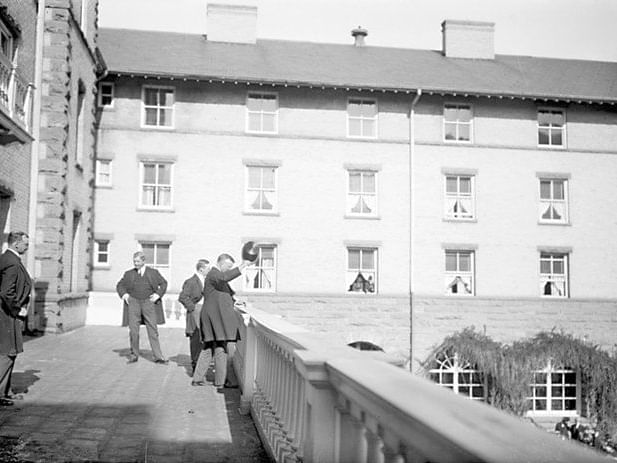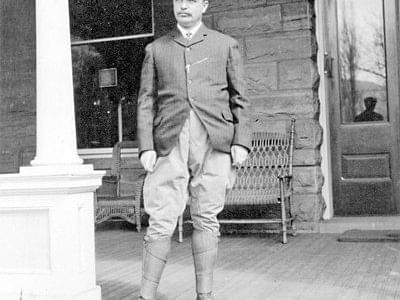The Hotel Colorado and the Brown Palace: Linked by History
Old guard historic hotels have a long-established tradition of welcoming guests to stay, dine, do business and relax in style. In the case of the Hotel Colorado and the Brown Palace, their appeal has stood the test of time—from the late Victorian period when they were built, to the present day. Authenticity and a legend-rich past are baked in with every stay.
Like connecting the dots in a thriller novel or viewing a great work of art, when it comes to history there’s always more to the story than meets the eye. The idea behind the six degrees of separation, that it’s a small world, is a hypothesis that can be as true for places as it is for people. Such is the case with the Hotel Colorado and the Brown Palace, two famous Colorado hotels whose pasts in the Centennial State are fascinatingly intertwined.
In fact, an 1892 newspaper article from the Denver Times makes the connection between the two: “Outside of the Brown Hotel in Denver, it is claimed the Hotel Colorado, as it will be called, will be the handsomest and best equipped hotel in the state.” Well over a century later, both hotels are where history, comfort and style intersect; one east of the Continental Divide, the other to the west.
Landmark Status
It comes as no surprise that both properties are listed on the National Register of Historic Places, a federal designation that deems these buildings as worthy of preservation for their historical significance. The Brown Palace is instantly recognizable for its unique triangular shape, as is the Hotel Colorado with its twin towers topped with two standards, an American and a Colorado flag.
Boom Times
The Brown Palace opened in 1892 and the Hotel Colorado followed just one year later in 1893. Both hotel owners, Henry C. Brown and Walter Devereux, did extremely well for themselves in the booming economy of the latter half of the 20th Century. Both men were entrepreneurial visionaries and sought to establish a legacy for themselves by creating opulent, no-expense-spared accommodations for the world’s most moneyed travelers. In Denver, known as Queen City of the Plains, the well-to-do cosseted in the Brown Palace; in Glenwood Springs, nicknamed Colorado’s Spa in the Rockies due to its hot springs, the leisure class settled in at the Hotel Colorado.
A Taste for Italian
Interestingly, Brown and Devereux shared an affinity for the same architectural style and the use of similar building materials. Both structures were built in the Italian Renaissance style, which was hugely popular for the design of grand, landmark buildings in the U.S. from the 1840s through the 1890s. The Hotel Colorado was modeled after the 16th Century Italian Renaissance Villa de Medici in Rome. Both hotels prominently feature red sandstone quarried in the Western U.S. on their exteriors.
Name Dropping
As two of the state’s premier hotels, they naturally attracted guests with wealth, power and status. Past patrons in common included world leaders and socialites. Presidents Theodore Roosevelt and William Taft made stops at both locations. In fact, there is a Roosevelt Suite at the Hotel Colorado and at the Brown Palace. Another notable character in common was Titanic survivor, the “Unsinkable” Molly Brown.
Unmatched Ambiance
What drew people to these properties when they were built continues to appeal to travelers who crave a heritage tourism experience. With landmark status and stunning interiors, historic hotels are steeped in the craftsmanship and ambiance of an earlier era. Exceptional service, along with extraordinary dining experiences created by top chefs, add to the reasons why the Hotel Colorado and the Brown Palace remain top choices—not only for vacations, but for events of all kinds, from holiday brunches to romantic weddings and corporate retreats.
Connect with history at a historic hotel. Stay in style at the Hotel Colorado.




